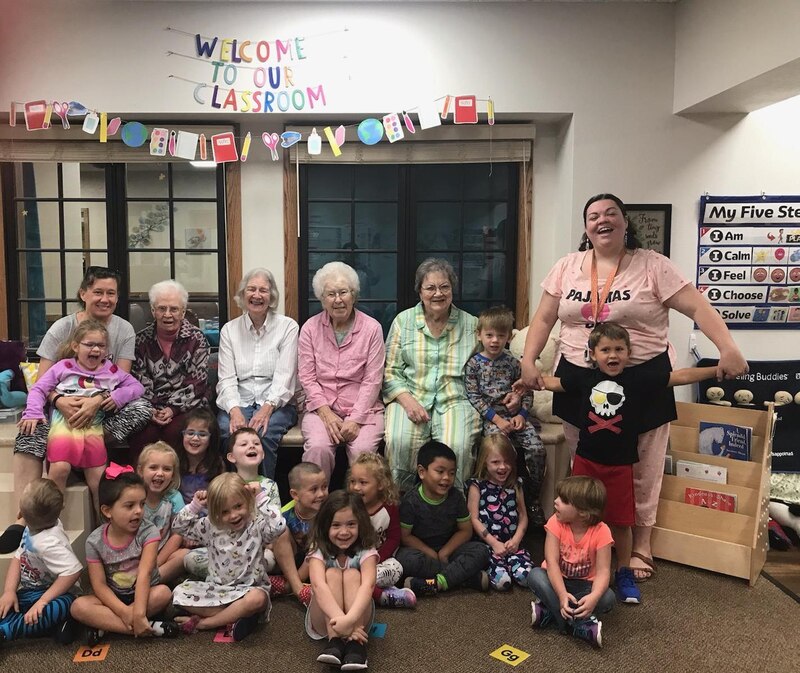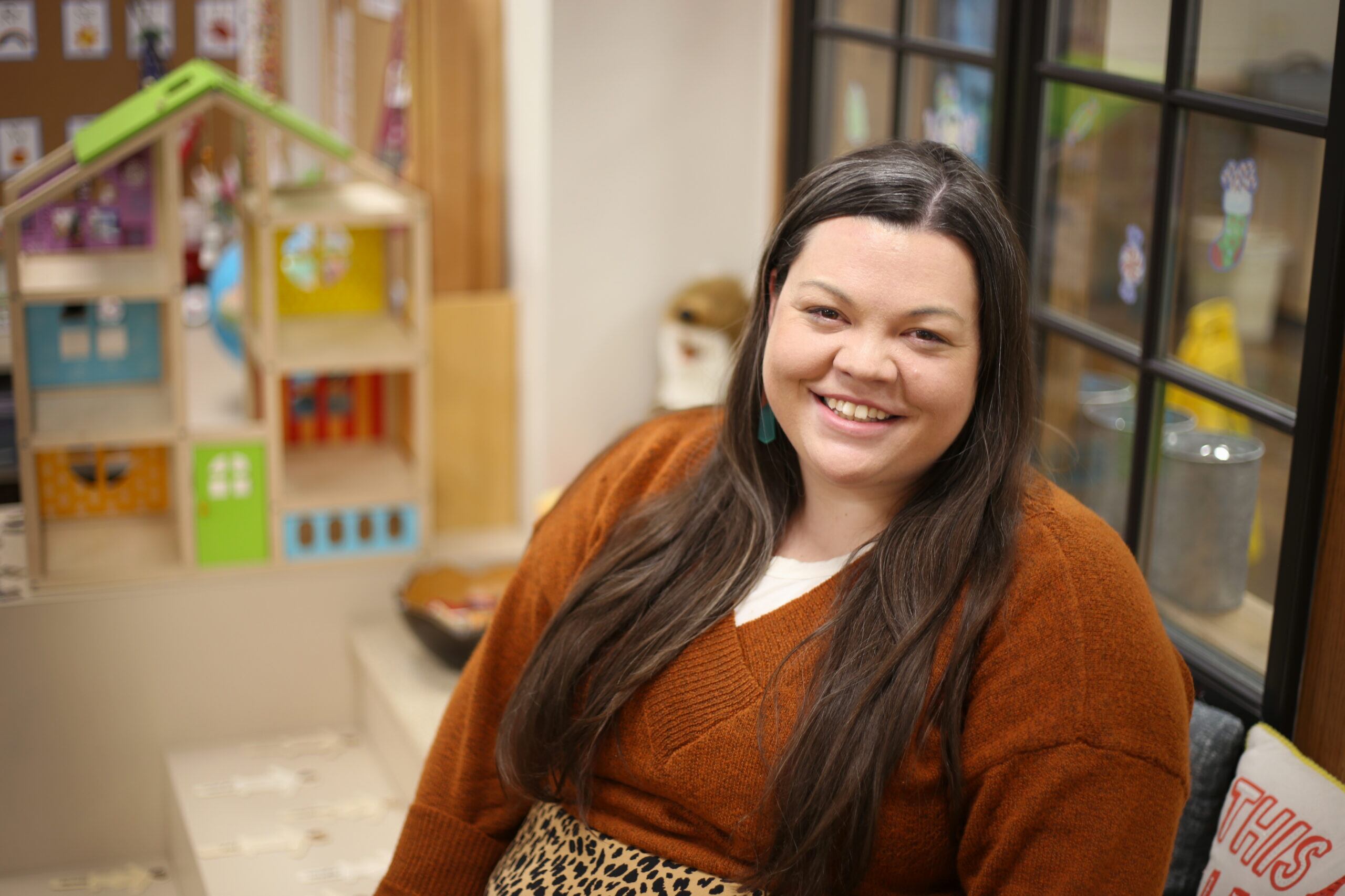National Teacher of the Year Tabatha Rosproy would normally teach her 16 preschool students in a classroom housed at a local retirement community and nursing home in Kansas. It’s a unique intergenerational program that encourages her young students to interact with the seniors at the home on a daily basis.
But since the coronavirus pandemic began, Rosproy, who works in a small rural school district in Winfield, Kansas, has had to shift gears: Now she’s pre-recording and uploading her lessons with an online tool called Seesaw, and then checking in with her students weekly for one-on-one video chats. If she can’t reach them virtually, she’s been calling, texting, or dropping materials off at their homes.
More than a third of her students have disabilities — including speech and language delays, motor delays, and cognitive delays — so she’s also preparing materials that model techniques her students’ families can use at home.
“Nothing will replace what we are able to do in person,” Rosproy said. “But we are surviving through this and we are looking for the small victories when we have them.”
Rosproy has also been active in helping her state education agency plan its response to the coronavirus. She was one of three educators who chaired the Kansas task force that developed guidance to help schools continue educating students during the pandemic, and she’s also advising the task force that’s coming up with a plan for how to reopen Kansas schools.
We spoke with Rosproy, who is the first early childhood educator to win the national teaching award, about what it’s been like to teach preschool students by video, how she’s maintaining the bond between students and the senior citizens, and why, in normal times, meeting up for ice cream can be a good way to get to know students.
This interview has been lightly edited for clarity and length.
How did you decide that you wanted to be a teacher?
I always knew that I wanted to help people, but when I was a senior or a junior in high school, I was taking a dual-credit college Spanish course, and part of that was volunteering to teach Spanish to preschoolers. For the first time, I got to observe a teacher. I got to see teaching as an art form in that classroom. And I knew then that it was something that I wanted to be a part of.
What have you learned about yourself as a teacher while working remotely over the last several weeks?
I’ve definitely learned that teaching preschool is a lot like theater. Especially when you are on a screen in a video recording. When you’re not getting the response from your students — your audience, per se — it’s kind of strange and awkward to be teaching to a camera. I imagine that they’re there with me when I’m doing my lessons, and then we connect over that content when we have our individual chats.
I’d never heard of a preschool teacher that had an intergenerational classroom. Can you tell me a little bit about that part of your job?
Every single day, every one of my students gets read to one-on-one in the lap of a “grandparent” or sitting beside them in a chair. That is something that I could not do on my own. Because I have them in there, I also get to work with smaller groups of students. They come with us on the playground. They jump in puddles with us, go on walks, and play with us in our classroom. We play Bingo with them, and we go to their library and do special events, like musical guests. Anything that we can involve each other in, both in the nursing home and in our classroom, we take advantage of.

What does an intergenerational classroom look like right now? Are you able to maintain contact?
I’ve encouraged all the students to mail letters and pictures. I wanted to set up window visits, but it just wasn’t safe to encourage families to get out of their home at that point. So I got messages from my students, I got chalk markers, and I went all around the nursing home and chalked up their windows. We also created a video of the students holding signs that they had made that say “I love you,” and “I miss you,” and “I can’t wait to see you.” And they played the video in their public spaces.
Is there a misconception that you feel like you initially brought to teaching?
I definitely thought that teaching was going to be a lot about academics. I’m finding more now that it’s a lot more about teaching our kids to solve conflicts, teaching them to interact with each other, to think critically, and to manage their emotions.
Do you have anything special you like to do to get to know your students?
I do things like meet with them in a public place, take them out to ice cream before the school year starts, or meet at the library to just talk with their family. I really like to send home a survey and get to know them before they come into my classroom. Because it’s scary the first time you do anything, and when you’re that little, it’s going to be important that there is someone there to greet you that knows you on a deeper level than just: “Hello, I’m Miss Tabatha, nice to meet you.”
What are some things happening in the community that affect what goes on inside your classroom?
Winfield, when you drive into it, looks like a place of prosperity. There’s a beautiful Main Street in downtown. We have a lot of people who care a lot about the appearance of our community. But there’s also something that my husband and I like to call “second Winfield.” A place of rural poverty and need that’s not maybe as evident. And we know that poverty can really affect a child’s life. There’s more likely to be trauma in places with rural poverty, there is more likely to be a need for things like food and housing.
What’s the most difficult part of your job?
Definitely, the most difficult part of my job is not being able to change circumstances for students outside of school. I can respond to their needs in my classroom. I can be involved in my community and initiatives to end domestic violence and poverty. I still can’t affect change in as many ways as I would want to in my children’s home lives. But I get to affect them in the classroom, and that means more to me than I can describe.






